Abstract
Hybrids of λ and adjacent bacterial deoxyribonucleic acid carried in T1 particles were able to transduce Gal+ with a greatly increased efficiency to strains which were not immune to λ compared to immune strains. The enhanced transduction was dependent on a functional recA+ gene in the recipient. Mutations of the donor's λ prophage which abolished the function of either the cI, O, or P genes in the recipients led to a further enhancement of transduction. The rate of transduction of a nonlysogenic recipient such as W3350 by the hybrid particles may be as much as 140 times greater than transduction of the lysogenic recipient W3350(λ). In addition to the effect of λ immunity in blocking enhanced transduction, mutations of the N gene of the donor's λ prophage abolished enhanced transduction. Mutations in the red, int, xis, and Q genes of the donor's prophage had no significant effect on transduction. The hybrids which mediated the enhanced transduction are called (λ-gal)T1.
Full text
PDF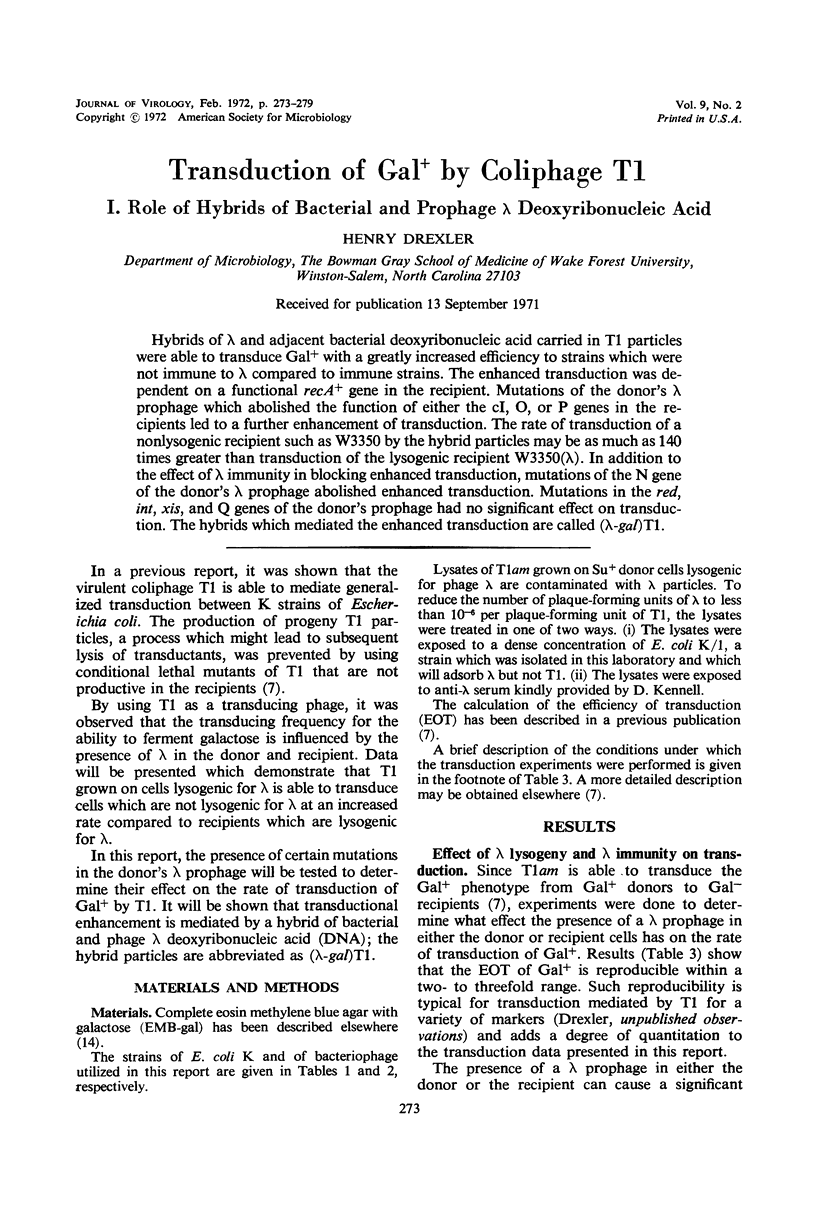
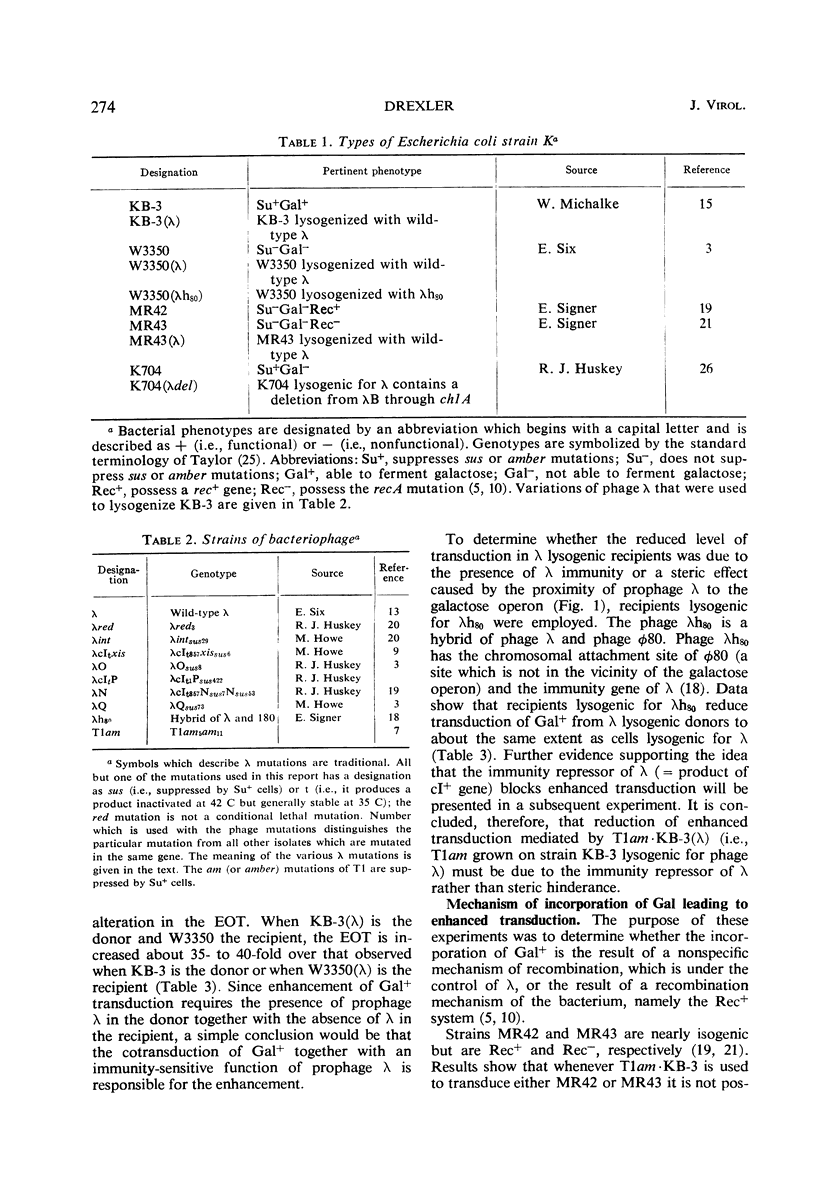
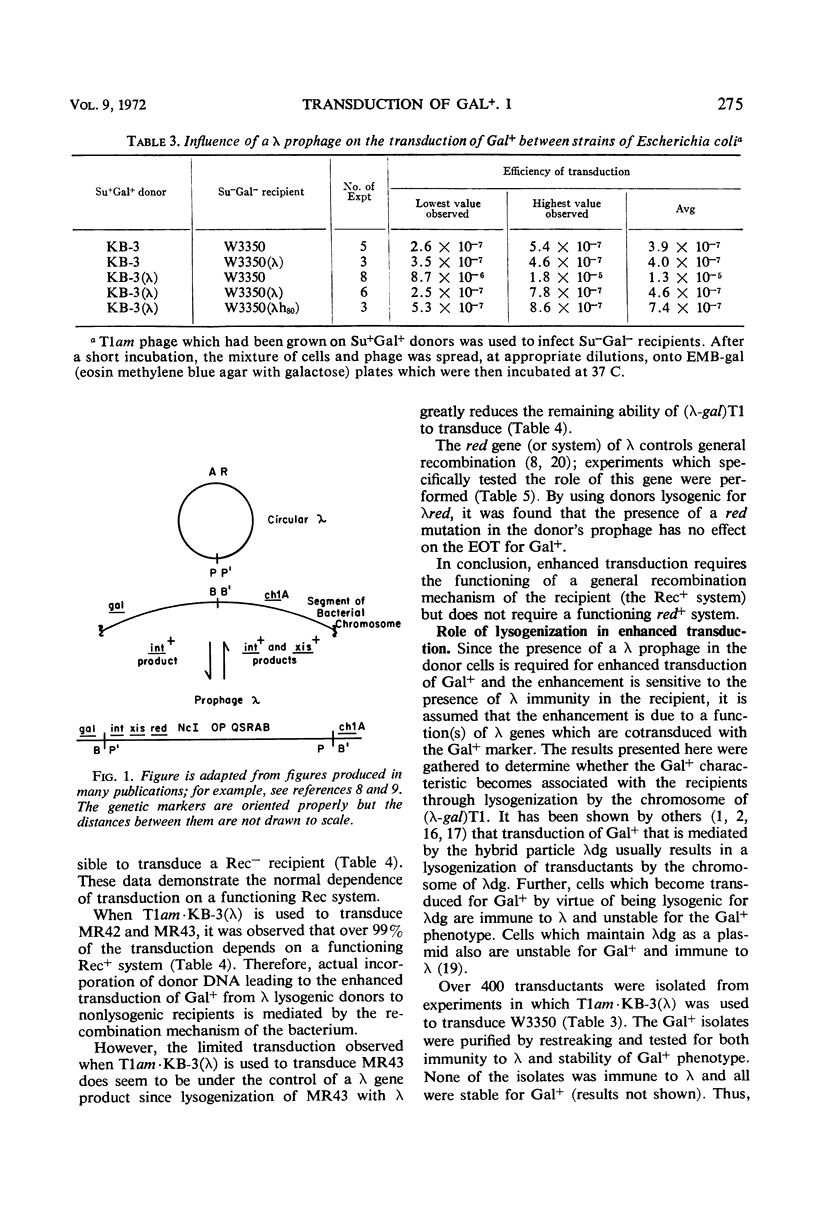
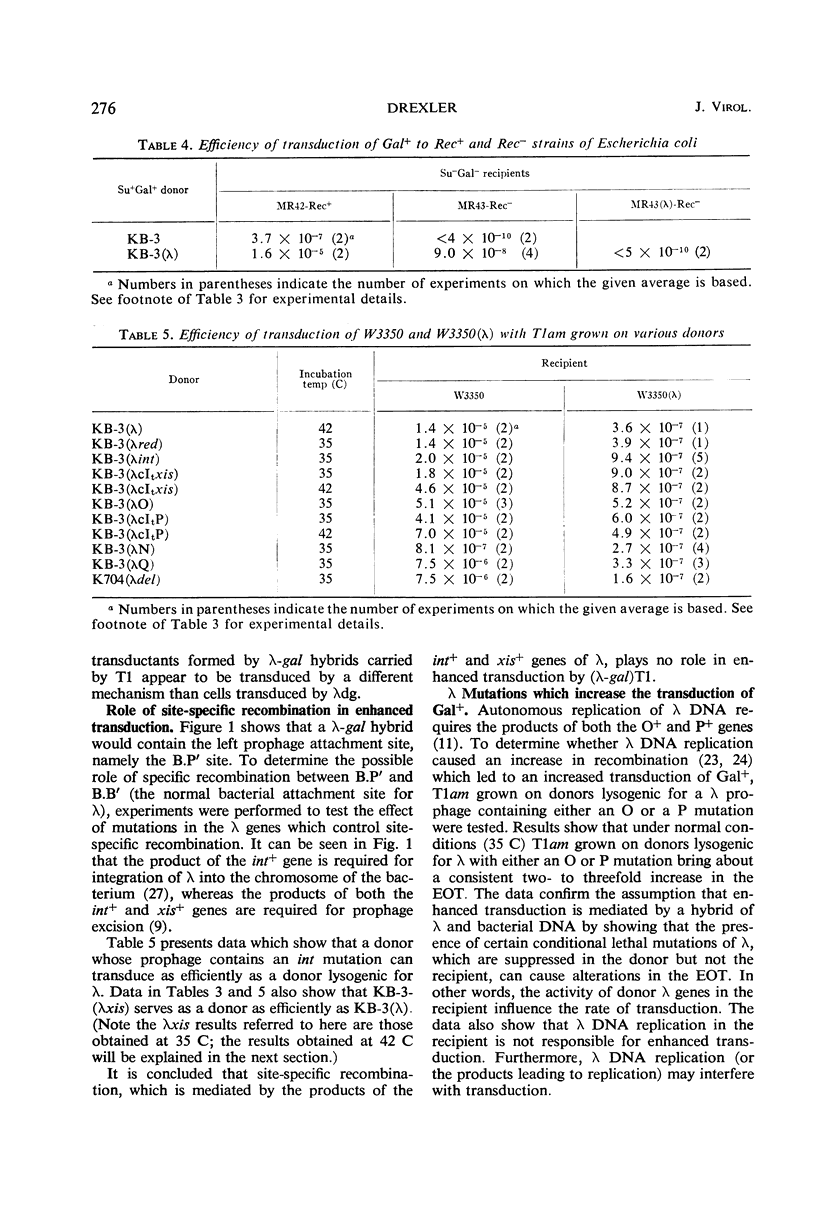
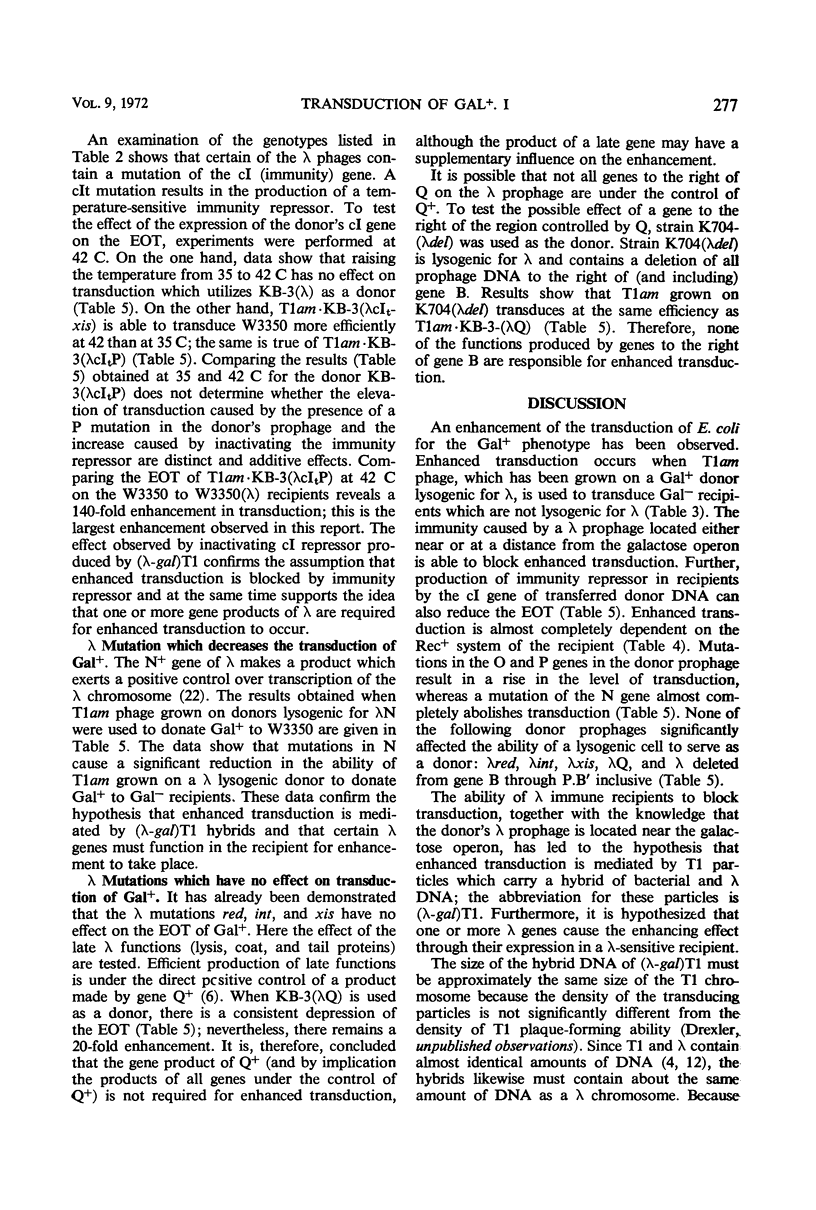
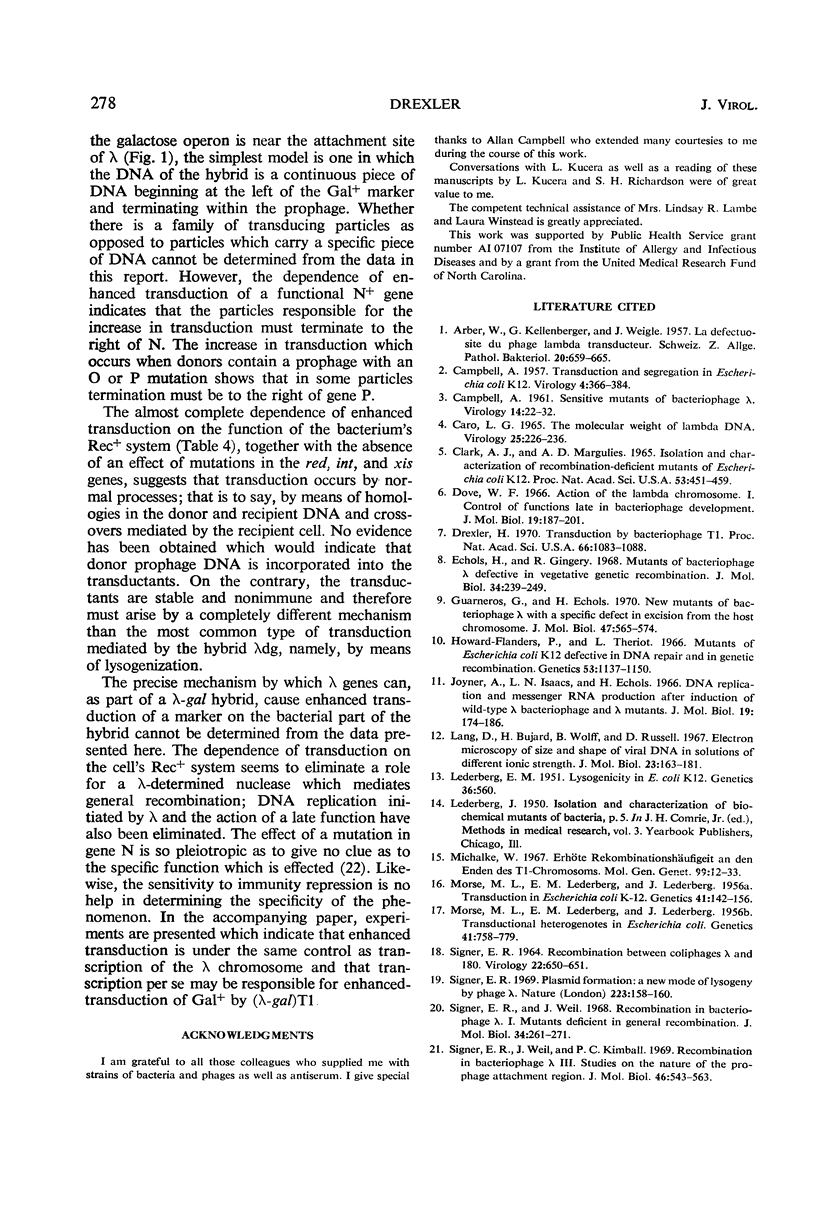
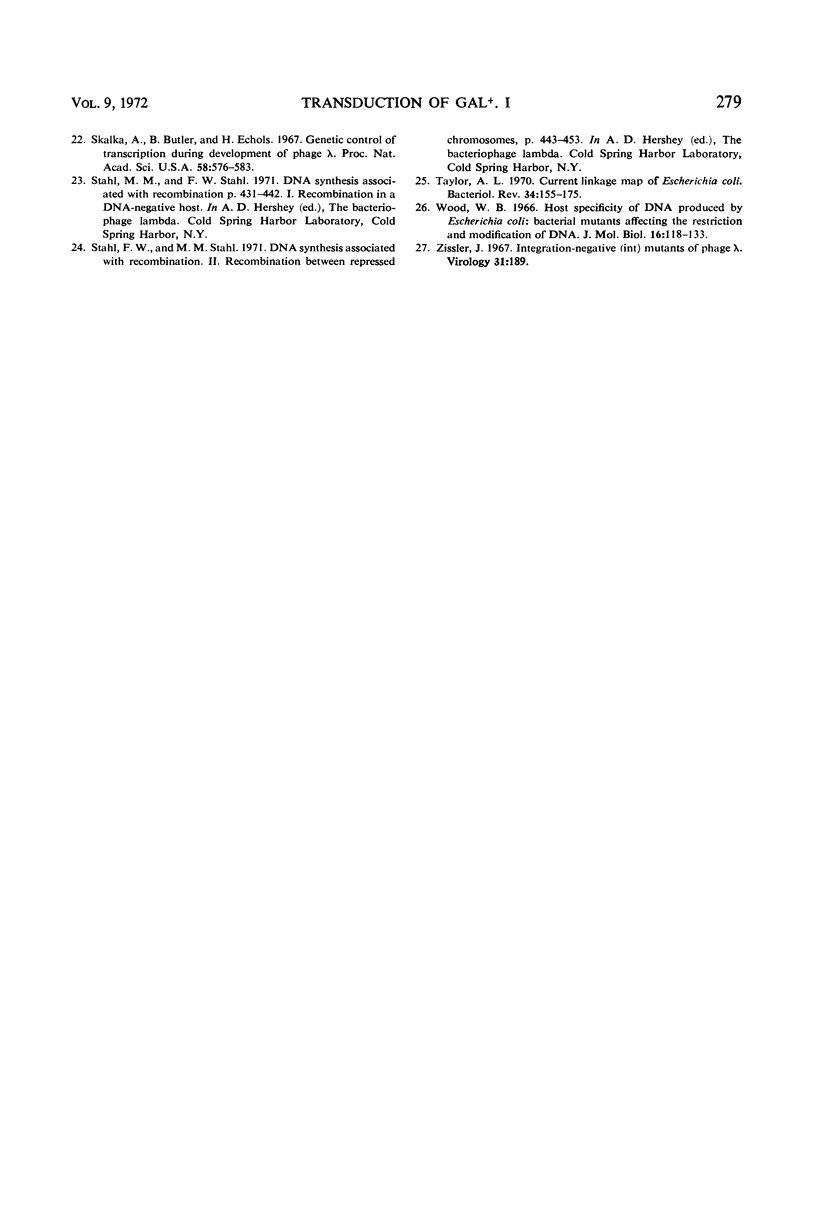
Selected References
These references are in PubMed. This may not be the complete list of references from this article.
- ARBER W., KELLENBERGER G., WEIGLE J. La défectuosité du phage lambda transducteur. Schweiz Z Pathol Bakteriol. 1957;20(5):659–665. [PubMed] [Google Scholar]
- CAMPBELL A. Sensitive mutants of bacteriophage lambda. Virology. 1961 May;14:22–32. doi: 10.1016/0042-6822(61)90128-3. [DOI] [PubMed] [Google Scholar]
- CAMPBELL A. Transduction and segregation in Escherichia coli K12. Virology. 1957 Oct;4(2):366–384. doi: 10.1016/0042-6822(57)90070-3. [DOI] [PubMed] [Google Scholar]
- CARO L. G. THE MOLECULAR WEIGHT OF LAMBDA DNA. Virology. 1965 Feb;25:226–236. doi: 10.1016/0042-6822(65)90201-1. [DOI] [PubMed] [Google Scholar]
- CLARK A. J., MARGULIES A. D. ISOLATION AND CHARACTERIZATION OF RECOMBINATION-DEFICIENT MUTANTS OF ESCHERICHIA COLI K12. Proc Natl Acad Sci U S A. 1965 Feb;53:451–459. doi: 10.1073/pnas.53.2.451. [DOI] [PMC free article] [PubMed] [Google Scholar]
- Dove W. F. Action of the lambda chromosome. I. Control of functions late in bacteriophage development. J Mol Biol. 1966 Aug;19(1):187–201. doi: 10.1016/s0022-2836(66)80060-8. [DOI] [PubMed] [Google Scholar]
- Drexler H. Transduction by bacteriophage T1. Proc Natl Acad Sci U S A. 1970 Aug;66(4):1083–1088. doi: 10.1073/pnas.66.4.1083. [DOI] [PMC free article] [PubMed] [Google Scholar]
- Echolas H., Gingery R. Mutants of bacteriophage lambda defective in vegetative genetic recombination. J Mol Biol. 1968 Jul 14;34(2):239–249. doi: 10.1016/0022-2836(68)90249-0. [DOI] [PubMed] [Google Scholar]
- Guarneros G., Echols H. New mutants of bacteriophage lambda with a specific defect in excision from the host chromosome. J Mol Biol. 1970 Feb 14;47(3):565–574. doi: 10.1016/0022-2836(70)90323-2. [DOI] [PubMed] [Google Scholar]
- Howard-Flanders P., Theriot L. Mutants of Escherichia coli K-12 defective in DNA repair and in genetic recombination. Genetics. 1966 Jun;53(6):1137–1150. doi: 10.1093/genetics/53.6.1137. [DOI] [PMC free article] [PubMed] [Google Scholar]
- Joyner A., Isaacs L. N., Echols H., Sly W. S. DNA replication and messenger RNA production after induction of wild-type lambda bacteriophage and lambda mutants. J Mol Biol. 1966 Aug;19(1):174–186. doi: 10.1016/s0022-2836(66)80059-1. [DOI] [PubMed] [Google Scholar]
- Lang D., Bujard H., Wolff B., Russell D. Electron microscopy of size and shape of viral DNA in solutions of different ionic strengths. J Mol Biol. 1967 Jan 28;23(2):163–181. doi: 10.1016/s0022-2836(67)80024-x. [DOI] [PubMed] [Google Scholar]
- Michalke W. Erhöhte Rekombinationshäufigkeit an den Enden des T1-Chromosoms. Mol Gen Genet. 1967;99(1):12–33. doi: 10.1007/BF00306454. [DOI] [PubMed] [Google Scholar]
- Morse M L, Lederberg E M, Lederberg J. Transduction in Escherichia Coli K-12. Genetics. 1956 Jan;41(1):142–156. doi: 10.1093/genetics/41.1.142. [DOI] [PMC free article] [PubMed] [Google Scholar]
- Morse M L, Lederberg E M, Lederberg J. Transductional Heterogenotes in Escherichia Coli. Genetics. 1956 Sep;41(5):758–779. doi: 10.1093/genetics/41.5.758. [DOI] [PMC free article] [PubMed] [Google Scholar]
- SIGNER E. R. RECOMBINATION BETWEEN COLIPHAGES LAMBDA AND PHI-80. Virology. 1964 Apr;22:650–651. doi: 10.1016/0042-6822(64)90090-x. [DOI] [PubMed] [Google Scholar]
- Signer E. R. Plasmid formation: a new mode of lysogeny by phase lambda. Nature. 1969 Jul 12;223(5202):158–160. doi: 10.1038/223158a0. [DOI] [PubMed] [Google Scholar]
- Signer E. R., Weil J., Kimball P. C. Recombination in bacteriophage lambda. 3. Studies on the nature of the prophage attachment region. J Mol Biol. 1969 Dec 28;46(3):543–563. doi: 10.1016/0022-2836(69)90195-8. [DOI] [PubMed] [Google Scholar]
- Signer E. R., Weil J. Recombination in bacteriophage lambda. I. Mutants deficient in general recombination. J Mol Biol. 1968 Jul 14;34(2):261–271. doi: 10.1016/0022-2836(68)90251-9. [DOI] [PubMed] [Google Scholar]
- Skalka A., Butler B., Echols H. Genetic control of transcription during development of phage gamma. Proc Natl Acad Sci U S A. 1967 Aug;58(2):576–583. doi: 10.1073/pnas.58.2.576. [DOI] [PMC free article] [PubMed] [Google Scholar]
- Taylor A. L. Current linkage map of Escherichia coli. Bacteriol Rev. 1970 Jun;34(2):155–175. doi: 10.1128/br.34.2.155-175.1970. [DOI] [PMC free article] [PubMed] [Google Scholar]
- Wood W. B. Host specificity of DNA produced by Escherichia coli: bacterial mutations affecting the restriction and modification of DNA. J Mol Biol. 1966 Mar;16(1):118–133. doi: 10.1016/s0022-2836(66)80267-x. [DOI] [PubMed] [Google Scholar]
- Zissler J. Integration-negative (int) mutants of phage lambda. Virology. 1967 Jan;31(1):189–189. doi: 10.1016/0042-6822(67)90030-x. [DOI] [PubMed] [Google Scholar]


